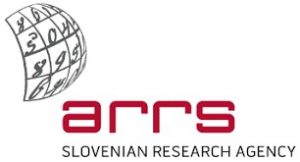Z2-3203: Advanced modelling of thermo-mechanical contact of spatial beams supported by experimental research
| Project title: | Advanced modelling of thermo-mechanical contact of spatial beams supported by experimental research |
| Project team UL:: | Anita Ogrin |
| Duration: | 1. 11. 2021 – 31. 10. 2023 |
| Project code: | Z2-3203 |
| Lead partner | University of Ljubljana, Faculty of Civil and Geodetic Engineering |
| Project leader at UL: | Anita Ogrin |
| Partners: | |
| Source of finance: |
Slovenian Research Agency
|
| Key words: |
thermo-mechanical contact, spatial beams, numerical model, experiment, dynamics, geometrically exact beam theory, temperature dependent material properties, material softening, spatial rotations |
Description
A topic of the project is a thermo-mechanical contact of spatial beams. Thermo-mechanical contact influences processes, their efficiency and final products in various fields of application, such as civil engineering, automobilism, robotics and biomechanics. The bodies in thermo-mechanical contact often have one dimension much larger than the other two and thus can be modelled as spatial beam elements, regardless of the field of application. Numerical modelling of mechanical contact of spatial beams can already be a challenge, since the boundary conditions at the contact surface depend on whether the beams are in contact or not, as well as on the direction of their relative displacements. Additionally, there is a friction force parallel to the contact surface, which is different in stick and in sliding state. A transition between the two states is instant and its modelling requires appropriate numerical procedures. Things get even more challenging with thermo-mechanical contact of two beams, which is essentially a coupled problem; the bodies in the contact interactively influence each other’s stress, strain and temperature fields. Temperature influences temperature deformations and temperature dependent material properties of the body. Also, the stress-strain state can influence temperature changes (for example due to the frictional heating). Furthermore, contact-pressure dependent thermal conductivity must also be considered in the model in order to avoid non-physical oscillations of contacting bodies and related instability of numerical model.
Main goals
Main goals of the postdoc project are:
- Development of numerical model of thermo-mechanical contact of spatial beams, which will physically correctly consider nonlinear temperature dependency of material properties, spatial and dynamical response of elements through geometrically exact spatial beam theory, multiplicative nature of spatial rotations, material softening and variable stiffness of the elements due to their contact. The developed numerical model will be time-efficient, numerically stable, robust, and will enable appropriate accuracy of numerical results.
- Design and execution of experimental research – a critical comparison of numerical and experimental results will enable conclusive validation of the new numerical model.
- Increase of knowledge on the effects of thermo-numerical contact of beam elements on technological processes in broader scientific and economic sphere and consequently optimisation of technological processes in various fields.
Project work packages:
The first part of the project is Numerical part and deals with development of advanced numerical model of thermo-mechanical contact of spatial beams. Analysis of thermo-mechanical contact includes among others also phenomena such as non-differentiable response of the bodies or element in contact, large deformations of these elements, non-linear temperature dependency of material properties, spatial and dynamic response of elements, non-linear stress-strain relationships, material softening and variable stiffness of the elements due to the contact. Even if each of these phenomena would be treated separately, the equations of the mathematical model would rarely have an analytical solution. Several of these phenomena considered at the same time, which is unavoidable in thermo-mechanical contact, necessarily requires numerical methods in order to solve the equations of the system.
Numerical part is divided into the following subparts:
- Outline of the numerical model
- Development of the numerical model
- Implementation of the numerical model into a computer programme
- Parametrical studies #1 (assessment of robustness and stability of the numerical model)
- Validation of the numerical model
- Parametrical studies #2 (optimization of certain system of spatial beams in thermo-mechanical contact)
The second part of the project is Experimental part and includes three subsequent subparts:
- Design of the experiments
- Execution of the experiments
- Analysis of experimental results
Experimental research will include different test configurations – the contact between two elements as result of temperature changes only, the contact between two elements as result of external mechanical loading only, and the contact between two elements as result of combined temperature changes and external mechanical loading. Displacements of both elements, temperature along each element and ambient temperature will be measured during the tests. The differences between the tests will likely enable determination of response of each of the elements in thermo-mechanical contact for temperature and mechanical influences separately.
The third part of the postdoc project is dissemination of its concurrent and final results.

